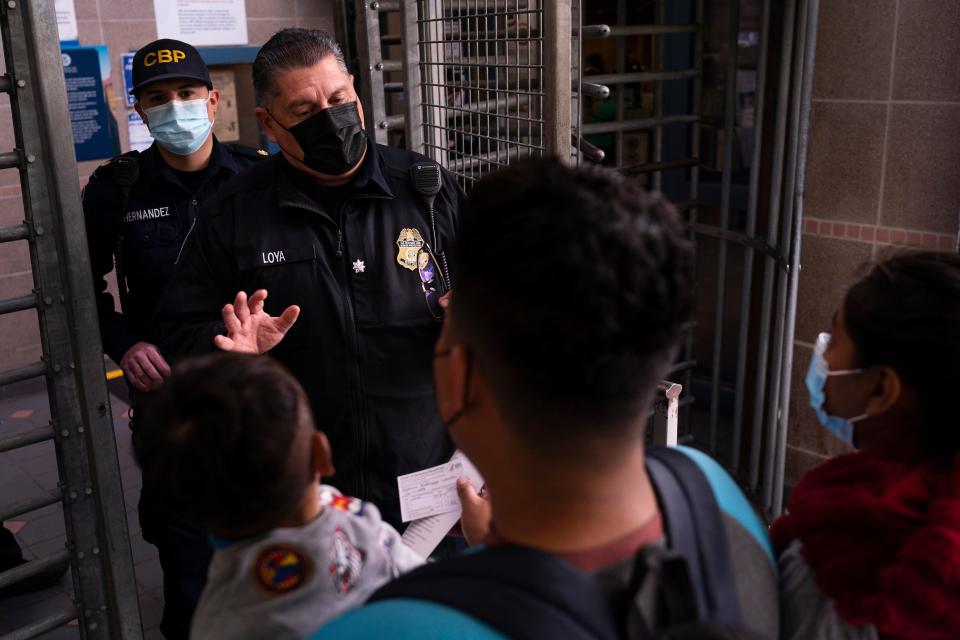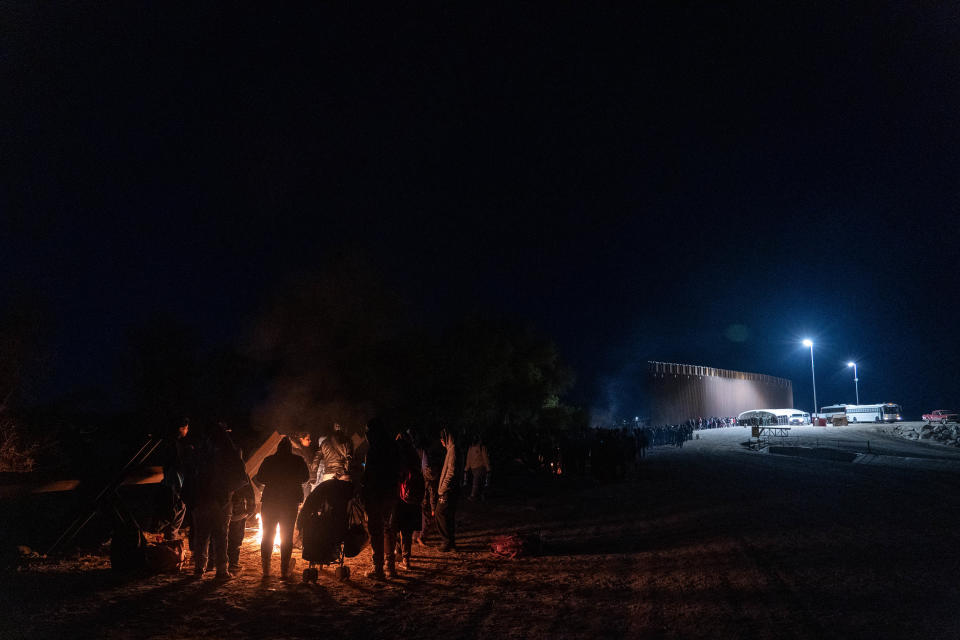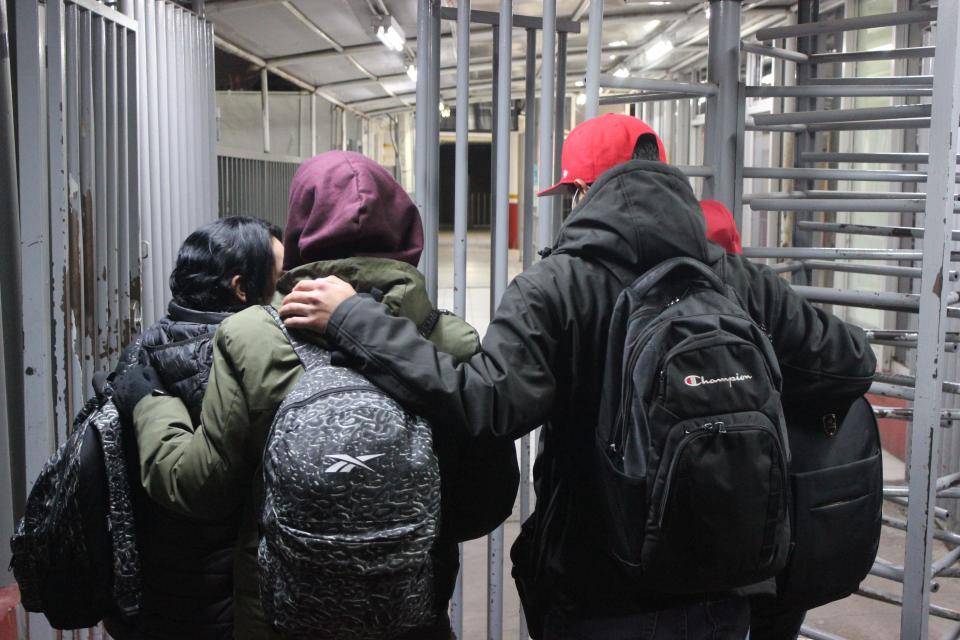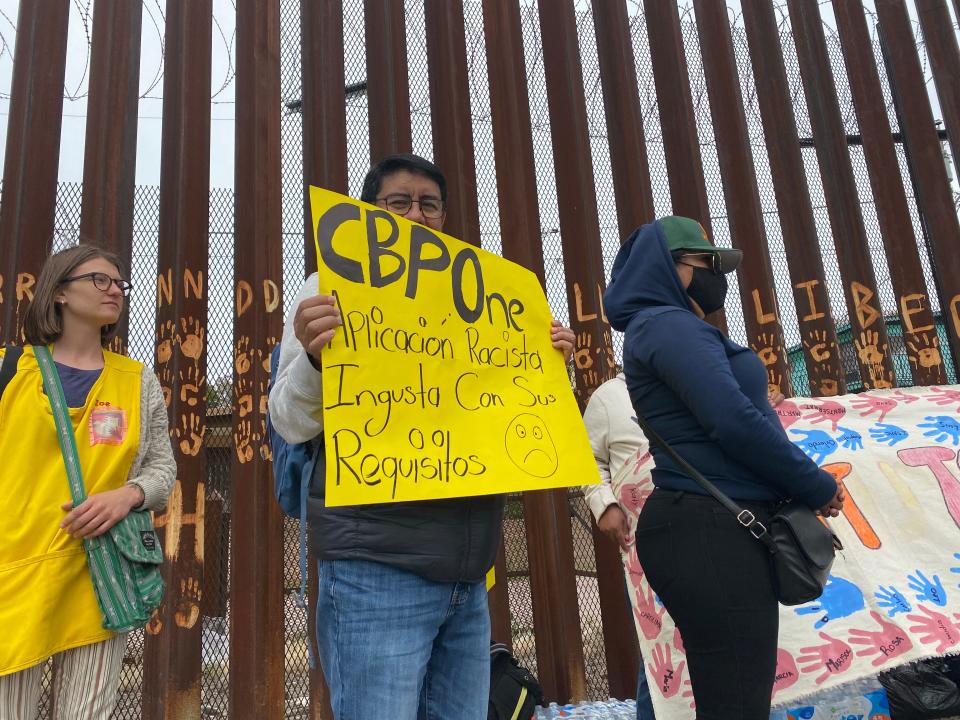Migrant encounters rise along US-Mexico border as end of Title 42 restrictions nears
The number of migrants encountered by U.S. Border Patrol along the U.S.-Mexico border increased by 25% in March as the Biden administration prepares for the expiration of Title 42 in less than a month.
The Border Patrol documented 162,317 encounters of people who entered the country in between ports of entry in March, increasing from 130,024 encounters in February, according to U.S. Customs and Border Protection data.
Total March migrant encounters along the border, including people processed at ports of entry, were 191,900. The number rose nearly 23% from February, per CBP data.
The total number includes repeat crossers, who are people who have been encountered at least once in the previous 12 months.

The rise in encounters comes on the back of a two-month stretch where Border Patrol recorded the lowest number of migrant encounters along the southwest border since February 2021.
February data: Border Patrol sees second consecutive month of lowest migrant encounters since February 2021
While encounters increased in March, the numbers are still lower than what were seen in March 2022 and March 2021. The uptick also follows historic trends of numbers increasing during spring as temperatures rise.
“CBP will continue to enforce our immigration laws and ramp up efforts to combat smuggler misinformation as we prepare to return to expedited removal proceedings under Title 8 authorities,” CBP Acting Commissioner Troy Miller said in a news release.
In Arizona, CBP’s Tucson sector recorded more than a 41% increase in migrant encounters from February to March, per CBP data. Similarly, there was nearly a 32% increase in the Yuma sector.

In March, 87,662 encounters were processed for expulsion under Title 42, the border restriction that has allowed officials to rapidly expel migrants for more than three years.
In March, Title 42 was used the most times in a single month since June 2022, per CBP data.
Title 42, a 1944 public health law that justifies immediate removal without an opportunity to seek asylum, has been used to quickly expel migrants over 2 million times since it was first implemented in March 2020. The policy is set to lapse when the public health emergency is lifted on May 11.

The U.S. Department of Homeland Security is estimating that as many as 13,000 migrants could be seen daily at the southern border when the restriction ends.
Sen. Kyrsten Sinema: Homeland Security not ready for end of border restriction
In January, the Biden administration expanded the restrictions of Title 42 to include people from Cuba, Haiti and Nicaragua. At the same time, the administration broadened parole programs to allow migrants from Venezuela, Cuba, Haiti and Nicaragua to be able to fly into the interior of the country if they have a U.S. sponsor and pass a rigorous application process.
The programs allow for up to 30,000 people from these countries to enter the country monthly for a period of two years and receive work authorization. Mexico agreed to receive 30,000 people per month from these countries who fail to use the new programs.
Additionally, the administration has been using a new function under the CBP One mobile application to allow migrants to schedule appointments at ports of entry to seek an exemption from Title 42. The app has been riddled with glitches and setbacks for asylum seekers since it was rolled out.

Families have been split up due to the too few appointments being offered each day, and the app also fails to recognize dark-skinned people.
More than 74,000 people have scheduled appointments since the new function was rolled out on the app. The top nationalities who have done so are Mexican, Haitian and Venezuelan, according to CBP.
In March, CBP processed 22,865 people at ports of entry as exemptions to Title 42 using CBP One, according to CBP.

The app is now available in Spanish, English and Haitian Creole, and CBP has implemented software updates to address technical difficulties.
Children younger than 5 years old are now not required to have a live photo taken of them to apply.
A new function also allows for families to log their information into the app together before appointments open up the next day, according to CBP. The new process has allowed for larger families to be able to schedule appointments together.
Have a news tip or story idea about the border and its communities? Contact the reporter at josecastaneda@arizonarepublic.com or connect with him on Twitter @joseicastaneda.
This article originally appeared on Arizona Republic: Migrant encounters jump 25% along US-Mexico border in March

